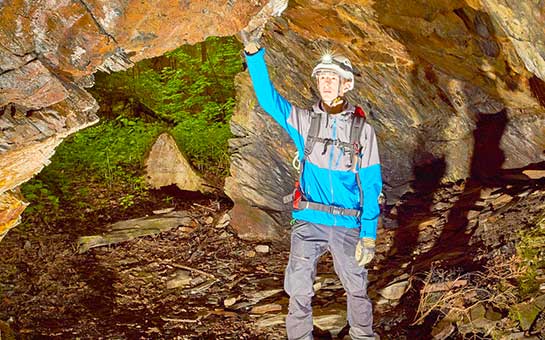Indiana Jones, Lara Croft, and you – the dream team of explorers set out in search of grand treasures! Minus the fiction aspect in that statement, caving as it’s called in the U.S. is an adventure sport. Some may also know it as spelunking in North America, or potholing in the U.K. and Ireland.
Not everyone wants to venture into unknown depths of dark caves. It takes a special brave heart for that. With any adventure sport, there are risks involved. Hence, having travel insurance for spelunking is crucial.
Travel Insurance for Spelunking and Caving
Whenever you travel far from home or to another country it is important that you get travel insurance for spelunking. Many regular travel insurance plans don’t offer coverage for caving or spelunking.
Prior to purchasing your policy, you should ensure that the plan offers adequate coverage for medical expenses associated by looking for caving or spelunking coverage in the hazardous activity or adventure sports details. If you’re not quite sure where to start, call our office now and we’ll help you choose the best plan for your spelunking needs.
The Basics of Caving
For some, caving is about venturing into the unknown to explore a labyrinth of caves underground. Even if it’s your hundredth time, it can be an exhilarating and nervous experience. If you’re someone who has never tried caving and is considering it, caving beginners are usually taken in group tours with an experienced guide in a well-explored cave. Unexplored caves have many uncertainties, which can drastically increase the chance of injury or death.
Imagine a dark and damp room with very little light, your footsteps are echoing on the walls and while going from one place to another you are trying to watch every step you make so you don’t stumble or step off the ground into open air. At times, you may need to crawl or squeeze through tiny crevices.
Caves are a mystery to someone that has never entered and can be quite disorienting. The main battle is with the mind, if you can pass that test you can progress further. If you think it isn’t for you, you certainly shouldn’t try spelunking.
The main equipment that spelunkers need on their person at all times are a helmet, headlamp, rope, harness, climbing great, a caving suit, protective boots, and ladders. Cave tours likely provide the necessary equipment, you should check online or call ahead of your trip to find out how you can prepare for your vacation.
Caves are mostly damp and depending on when you go caving, they can also be wet. So, spelunkers should avoid jeans because wet jeans get heavy and uncomfortable, and can make moving a nightmare. Experienced spelunkers also carry some nourishments and sleeping gear if they have to spend the night in a cave. Regardless of the experience, protective gear is a must to protect from caving accidents.
Cave conservation is a serious concern. Cave visitors can leave their trace without even realizing what they've done. It's very easy to pollute the fragile ecosystem of caves by bringing in dirt from other areas in on the bottom of your shoes. If this seemingly insignificant element can negatively impact the creatures living in the cave, imagine with more obvious pollutants or unintended destruction can do. There are some caves or cave passages that could be marked off and visitors are not welcome to tour the area because of the potential dangers to people and/or for conservation reasons.
Risks of Spelunking or Caving
As spelunking or caving is an adventure sport, there are risks involved. The truth is, accidents have happened, and they will continue to happen. The only thing you can do is be listen to your tour guide, be cautious, and be prepared.
The most common injuries during caving are the result of slipping, tripping, and falling due to the damp nature and terrain of caves. The actual injury can be minor or major depending on the situation. Most reported injuries are broken bones, cuts, scrapes, bruising, and sprains.
Another thing that can cause injuries or fatalities during caving is rockfall. Caves are sometimes filled with large boulders that hang loose called breakdowns. You must be extremely careful of these boulders because they can tumble at any time. The rocks are heavy and can cause serious injuries or death.
The temperature in caves is typically lower than outside the caves. Because it’s underground, it’s insulated from the warmer temperatures, therefore much cooler. It can get cold enough to cause hypothermia.
Caves can also hold water or have streams and rivers running through them. There is also the possibility of falling into or being swept away in swiftly flowing water and drowning.
Be safe, and don’t walk or climb into a cave or cave passage that is blocked off to entry either with a barricade or even a sign saying “do not enter.” It’s surprisingly easy to get lost in extensive cave tunnels and it can be quite difficult, if not impossible, to find your way back out.
If you’ve traveled into a restricted area and you don’t have permission from the governing organization to be in the area and you’re injured, your travel insurance coverage may not cover the cost to treat the injury.
These potential for injury in caving is there even when you’re following a guide and the rules. Having the right adventure sports travel insurance plan can help provide protection to help you when you need it most.

